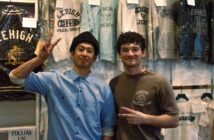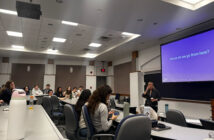Ever since the “Decision” — the made-for-TV spectacle in which LeBron James announced that he would be leaving the Cleveland Cavaliers to “bring his talents to South Beach,” — the formula for building a championship contender in the NBA has been to assemble two or three superstars and construct a team of complementary role players around them.
In the aforementioned case, LeBron joined fellow stars Dwyane Wade and Chris Bosh on the Miami Heat, earning the nickname the “Heatles” (a reference to The Beatles), and winning back-to-back titles in 2012 and 2013.
The welcome party for the three superstars was largely representative of the new era this marked for the NBA. This ostentatious declaration of impending doom for the rest of the league (LeBron promised that the Heat would win “not one, not two … but seven” NBA championships) became the blueprint for team-building.
If you wanted to beat this team, you were going to have to assemble one that could match Miami’s might.
In the international relations theory of realism, the international system is characterized by anarchy: there is no central enforcement mechanism to control state behavior. A byproduct of the anarchic system is the security dilemma, in which states must protect themselves militarily at the expense of their rivals. One state’s increase in military can necessitate the next state’s increase; this process continues in a spiral.
In a sense, the NBA is a zero-sum realist ecosystem, with general managers scrambling to acquire the league’s best players to keep them away from their competitors.
In an era of player empowerment, when players can work their way out of contracts if they feel like it, the mechanism keeping players on their teams has weakened.
The “Heatles” only made this effect more pronounced, kicking off the age of the NBA super team. Now, NBA security is maintained in the form of a shield of at least two superstar caliber players.
Other teams followed Miami, notably the Golden State Warriors, who added Kevin Durant to their championship core of Stephen Curry, Klay Thompson and Draymond Green in the summer of 2016.
The Warriors reigned as the “team to beat,” winning back-to-back titles in 2017 and 2018. A healthy squad would likely have won in 2019, too, but was plagued by season-ending injuries to Thompson and Durant.
Other teams followed this mold as well, often mortgaging their long-term futures for the chance to win in the immediate.
The Clippers gave up Shai Gilgeous-Alexander, Danilo Gallinari and a whopping five first round draft picks to land All-Star forward Paul George, pairing him with former Finals MVP Kawhi Leonard.
The Lakers similarly shipped off a promising young core of players in exchange for Anthony Davis, pairing him with LeBron.
More recently, the Brooklyn Nets traded Jarrett Allen, Taurean Prince, Caris LeVert, Rodions Kurucs, three first round draft picks (2022, 2024 and 2026) and four first round pick swaps (2021, 2023, 2025 and 2027) for James Harden, forming a super-trio in Brooklyn with Kevin Durant and Kyrie Irving.
As previously mentioned, superteams in the past have had success. But now, taking a look at the standings as the playoffs approach, it seems that another team-building strategy may be more successful.
The Phoenix Suns and the Memphis Grizzlies are the top two teams in the NBA and, coincidentally (or maybe not), they both built their teams through the draft, without mortgaging their futures to build superteams.
The Grizzlies have built a contending team around a young core of Ja Morant, Jaren Jackson Jr., Desmond Bane and Dillon Brooks. What these players all have in common is that they were all drafted by (or immediately acquired after the draft by) the Grizzlies.
The Suns have similarly built around Devin Booker, Chris Paul, Deandre Ayton and Mikal Bridges. The Suns drafted all of these players except for Paul, who they landed via a trade deal which did not require giving up any key young players.
Alternatively, the Lakers are out of the playoffs, and both the Clippers and the Nets are both the eight seeds in their respective conferences.
With the rise of teams thriving on the strength of their homegrown talent, it may be time for NBA front offices to reevaluate the strategy of trading young, developing cores for one or two stars.






Comment policy
Comments posted to The Brown and White website are reviewed by a moderator before being approved. Incendiary speech or harassing language, including comments targeted at individuals, may be deemed unacceptable and not published. Spam and other soliciting will also be declined.
The Brown and White also reserves the right to not publish entirely anonymous comments.